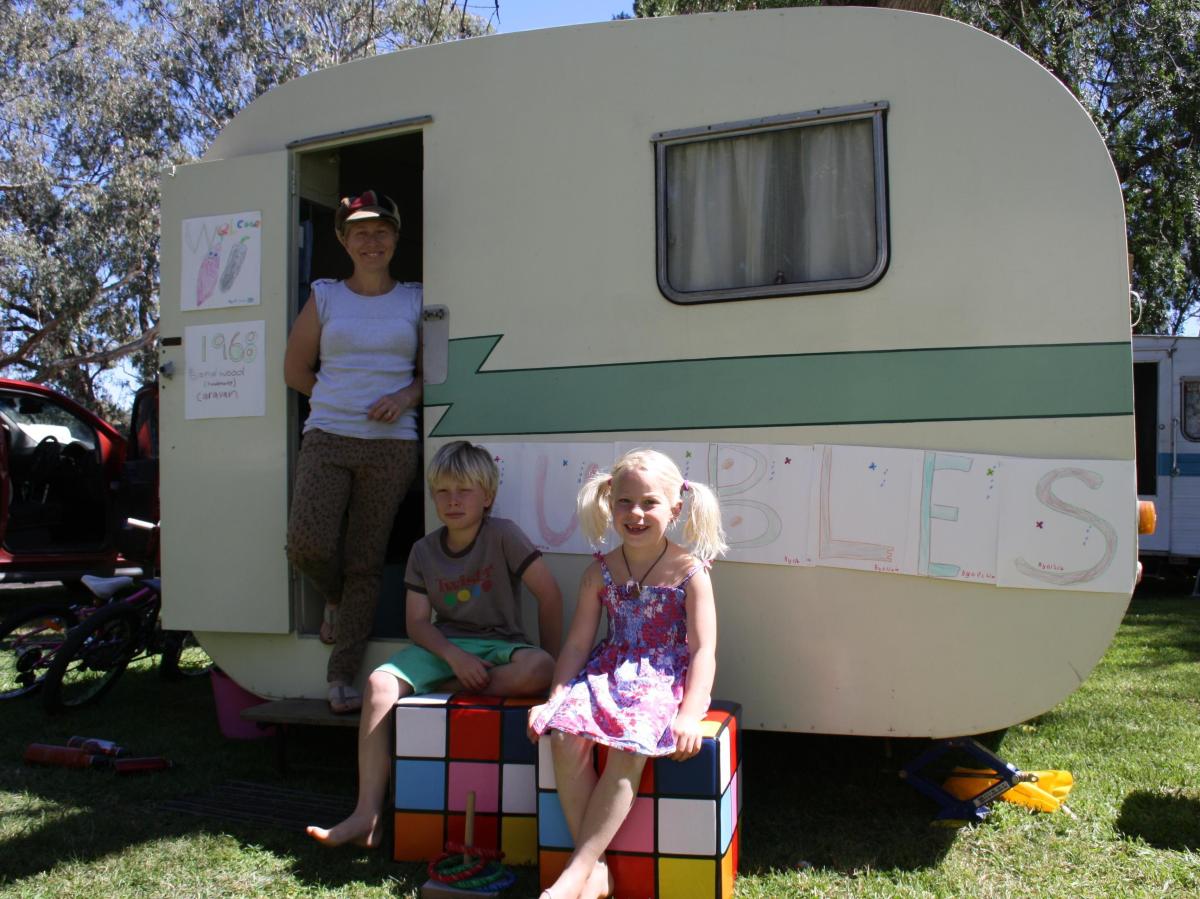As the only resident-Australian member of the European House of Culture, I attended a roundtable in Brussels in December 2013, a precursor to the Berlin Conversation in March, when members of the European House of Culture and senior artists were to meet candidates standing in the May European elections. This forced coupling is designed to argue for cultural policy and to invite Euro politicians to engage with the arts…
At one point the conversation turned to the constant desire to render culture more visible. I made the point that people encounter arts and culture everywhere on a daily basis – it is highly visible, but not recognised as art. One of the participants from Italy asked, ‘Have you all read the recent stats on participation in culture?’ The inference was that it’s only a small percentage of Europeans who engage with culture – hence the lack of interest by politicians.
He missed my point. In Australia we have very good stats about active participation, attendances at events and exhibitions; but these were not the numbers I was referring to. I refer to the countless millions everyday who hear music, even dance or sing along in their own homes to that music, and fail every day to recognise or acknowledge that the enjoyment of this product is derived from the work of a composer, musicians, technicians and others. The same goes for products of design, fashion, graphic art, screen content of every kind, and all those things that in many ways define our daily life…
We in Australia have advantages in using culture to describe a life wider than just the arts. On the other hand, we rarely elevate our discussion of culture to include core ‘cultural values’. Yet those values inform what many artists strive to express in their work. I find it useful to think that we are more likely to use the word to describe the many things that constitute the fabric of life. I think of ‘culture’ as that thing I detect in the places I visit, or drop into. If I visit Madrid, for instance, then football, food, and bullfighting are as vital as the Prado or Lorca, flamenco or Buñuel. This usage allows me to describe subcultures in my own country, referring, for instance, to the differing cultures and subcultures of Western Sydney or Redfern, Gold Coast or Townsville, Northbridge or Fremantle, Brunswick or St Kilda.
And, indeed, part of the experience of young festival directors and managers – including a growing number of Australians – who take part in the Ateliers of the European Festivals Association, is to enjoy that wider sense of culture in host cities – Gorlitz, Singapore, Inzmir, Ljublijana, Edinburgh and coming up Beirut and Poznan. So it’s not that the wider reference is unknown in continental Europe, but there the word culture still largely denotes the arts.
While I heard a marked difference between our use of the word culture and theirs, allowing us to talk about the arts as part of culture, which I find helpful, there was another word missing entirely: community.
We know the word is over-used and often misused in its rarely challenged role as a sweetener for activities which do not authentically proceed from community or with community in mind. It is also often used in a way that somehow excludes artists, and forgets or denies that artists are also members of a community who buy food, clothe their kids and pay school costs and water rates and taxes. While the British use the word in much the same way as we do in Australia, Europe differs. Yet there are superb projects and processes that contribute just as strongly to what we call community cultural development.
A Soul for Europe is clearly one of them. For me, it’s a key point of difference that The Decisive Deal talks about ‘society’, ‘civil society’ and ‘citizens’ rather than ‘community’. While the intent of our use of the word ‘community’ is almost always to reassure everyone of inclusiveness, it is in danger of incorporating that unfortunate habit of reverse condescension in which organisations or events give the ‘community’ what it already knows and wants because, as English sociologist and commentator Frank Furedi put it, the ‘community’ is often deemed to be ‘not up to much more’: quality and innovation still being preserved for economic or aesthetic elites. There is a huge difference between ‘community member’ and ‘citizen’, the latter loaded with rights and responsibilities in the context of broader society or nation, unlike the more localised ‘community member’.
This seems to be standard in continental Europe. In Australia and Britain, cultural policies at every level of government are chock full of references to ‘community’, it seems in an effort to ensure that no handler of the public purse would ever favour elites; up comes the old anomaly with sport. There’s pride in investing in sporting elites, but often reticence in their arts equivalents. In Europe there are thousands of examples – in the Capital of Culture program for instance – of what we call community engagement, by another name. France’s nomenclature is particularly interesting. The fabric of the country rests on liberté, egalité, fraternité and therefore it would be unconstitutional to bestow gifts unevenly – hence General de Gaulle’s successful decentralisation during which marvellous arts centres and hubs, resilient to this day, were set up in Lyon, Avignon, Montpellier, Aix-en-Provence, to name a few…
For us in Australia, it has become almost mandatory for large venues and small, as well as the better-funded bigger events such as festivals, to be overt in their programming for and with ‘community’. For the Centenary of Canberra we commissioned many such works: Jyll Bradley’s City of Trees… One River… The Museum of the Long Weekend…One of the features of all this work is that it strives for excellence. These artists work in and for ‘community’ but they also demand their work be the best it can be – a combination of imagination, craft, and skill all pulled together with high production values to create work which stands up to global scrutiny and standards recognised throughout the world. The two are not mutually exclusive, yet that’s the impression that a lot of programs imply. I find that one of the greatest fears amongst arts and culture policy makers is that of being asked to define ‘excellence’, yet the word is filled with as many unknowns, and is used with a confidence as unwise – in the midst of widely differing opinions – as ‘community’. I know what I mean when I use the word. I’ve seen a lot of work by many artists of all kinds, and when I see something full of craft and skill, serious in intent (even when light, comedic and full of fun), stylistically original not borrowed (this means imaginative and lively presentations of classics as well as new works), and it is work which stands up to the best I’ve seen in the past (and I’ve seen a lot, from all over the world) this is what I call ‘excellent’.
It is rare. It is not the same as fashionable and not the same as populist, even though many such projects are very popular and their presence widely communicated. It is the result of experiment and failure along the long and painstaking path to excellence, exactly the same as in science, and that artistic process is equally deserving of our support and encouragement. And there is no doubt in my mind that non-artist participants (I am still avoiding the word ‘community’ in an effort not to step into that word’s muddy waters) benefited from them: the joy and energy communicated by them to me was of both an individual and societal nature. The vast majority of non-artist citizens loved the projects, which made them feel happy with, and proud of, their city and its achievements.
Despite the presence of these artists whom I was sure would create excellent works to celebrate Canberra’s centenary, it was communicated to me that more ‘community’ work was needed. Given the program was already rich in excellent content and variety, I had no problems agreeing to an extra million dollars which would support ‘community’ initiatives. In the end, around fifty projects were supported, not all of them arts projects: they ranged from the cake decorators and floral arrangers, to the Royal Canberra Show; from the preservation of the Artsound radio collection of interviews with local artists and Gavin Findlay’s work on the archive of Canberra performance group Splinters, to a Highland gathering…
So what was the unease I felt in Brussels? Capitals of Culture have similarly all-inclusive programs; they tend to highlight all that their city is, including art and sport, architecture and city planning, even science and education, agriculture and environment.
But when I asked the question about culture versus art, I felt a bit dumb, as if I had somehow blotted my copybook in the office of serious European culture…Nele Hertling and her colleagues in A Soul for Europe are agitating, not for face-painting and bouncy castles as a sign of true fidelity to ‘community’, but for arts and culture as a means for greater unity across an entire continent, for the rights of citizens to participate through the arts in the re-imagining of Europe through a new narrative.
It felt to me, that for all our notion of ‘culture’ in some ways now embracing a healthy, more inclusive range much broader than just the arts, to include cuisine and pop culture, sport and ‘lifestyle’ activity, we would do well to lift our gaze above the local day to day and start to bear more intensely in mind what the Europeans do have, and that is the notion of cultural values.
This article is an ArtsHub edited verison of The Decisive Deal: Culture as Key to the Soul published in Griffith Review: Cultural Solutions available from [email protected].






